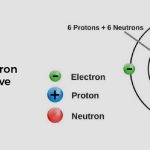A triangular prism is a three-dimensional figure with five surfaces, each of which connects to form the shape of a triangle. What might be less obvious is how many bases triangular prism3D object contains and what those bases may look like. If you’ve ever wondered about this unanswered question regarding geometry and 3D shapes, then you’ve come to the right place!
In this blog post, we’ll explore everything there is to know about triangular prisms — from the number of faces, they possess to their different types and more — so that you can understand all the unique characteristics associated with this geometric shape. Read on for an in-depth exploration of the properties of triangular prisms that will help answer your questions.
Introduction of Triangular Prism
A triangular prism is a three-dimensional geometric figure with two parallel, congruent faces called bases and three lateral faces. All the sides, including the bases of a three-sidedprism, are rectangles or squares. The shape of the lateral faces is determined by how many sides each base has – either three (if it’s an equilateral triangle) or four (if it’s an isosceles triangle). As such, a triangular prism has two bases and three lateral faces, making it a five-sided geometric figure.
Properties of Triangular Prism
The number of edges on a triangular prism is nine. The number of vertices (corners) on a triangular prism is six, and the number of faces is five. A triangular prism has two bases, triangles, and three lateral faces, rectangles, or squares. This means that a triangular prism has how many bases? That’s right – two bases! Since the sides of a three-sidedprism are rectangles or squares, its surfaces are considered to be regular polygons.
Right Triangular Prism
The right triangular prism has two distinct types of surface area. One is the lateral face, an area of the vertical face. Another is the surface area which is the total of all sides and faces in the three-dimensional figure.
The lateral face of the right triangular prism is a rectangle. This rectangle has a width the same as the sides of the triangular base. It is considered a lateral face because it forms a sequence of parallel segments.
In the context of the triangular prism, the lateral face is the equivalent of the triangle’s base. However, the lateral face is not perpendicular to the base planes, so it cannot be calculated using the same formula.
The lateral surface of the triangular prism is an area equal to the perimeter of the equilateral triangle base multiplied by the length of the prism. This is the largest lateral surface in the triangular prism if it is not the largest surface.
Oblique Triangular Prism
If you wonder how many bases are in an oblique, triangular prism, you will be surprised to learn that it is only two. However, this prism has three lateral faces, as well. It is also called a parallelogram. The two congruent triangles that make up the base are called vertices, anda line connects these vertices.You can calculate the surface area of the oblique, triangular prism using the following formula.
Oblique, triangular prism = length of the oblique prism x parameter of the base
After that, you can add the areas of the lateral faces to get the total surface area of the prism.
Since the height of the oblique prism is not the same as its lateral edge, you will have to use a metric unit to calculate the surface area. For instance, if the base is 4.5 cm high, then you can use the expression h = 4.5 units. Similarly, the lateral edges of the right prism are perpendicular to the corresponding lateral edges of the base.
What do You Know About TriangularPrism Faces, Edges, Vertices& Bases?
A triangular prism has two bases: triangles, three lateral faces, rectangles or squares, nine edges, and six vertices (corners). Therefore, a triangular prism has how many bases? That’s right – two bases! The number of edges on a triangular prism is nine. The number of vertices (corners) is six, and the number of faces is five. The sides of a triangular prism are rectangles or squares, making its surfaces regular polygons. Thus, we can conclude that a three-sidedprism has two bases and three lateral faces.
| Faces | Edges | Vertices | |
| Triangular Prism | 5 | 9 | 6 |
Surface Area Formula of Triangular Prism
Surface area = (Perimeter of the base × Length) + (2 × Base Area) = (a + b + c)L + bh
where,
- b is the bottom edge of the base triangle,
- h is the height of the base triangle,
- L is the length of the prism,
- a, b, and c are the three edges (sides) of the base triangle
- (bh) is the combined area of the two triangular faces because [2 × (1/2 × bh)] = bh.
The formula for the surface area of a triangular mirror consists of the area of the base of the prism, the top and bottom triangle sides, and the lateral face. This is a bit more complicated than a straight answer.
If you want to know how to calculate the surface area of a triangular prism, the answer is pretty straightforward. You will need the height of the prism, the area of the top and bottom triangle sides, and the length of a lateral face. Once you have the three components, you can use a simple formula to calculate the final answer.
A triangular prism is a box with two equal triangular faces, one on each side. These faces may or may not be the same. When calculating the area of the triangular prism, you can use the same formula to calculate the areas of the faces and sides of all five prisms.
Conclusion
In conclusion, a triangular prism is a three-dimensional geometric figure with two parallel, congruent faces called bases and three lateral faces. It has nine edges, six vertices (corners), and five faces. The number of bases on a three-sidedprism is two, as it has two congruent triangle-shaped faces. The lateral faces are rectangles or squares, making the prism’s surfaces regular polygons.


